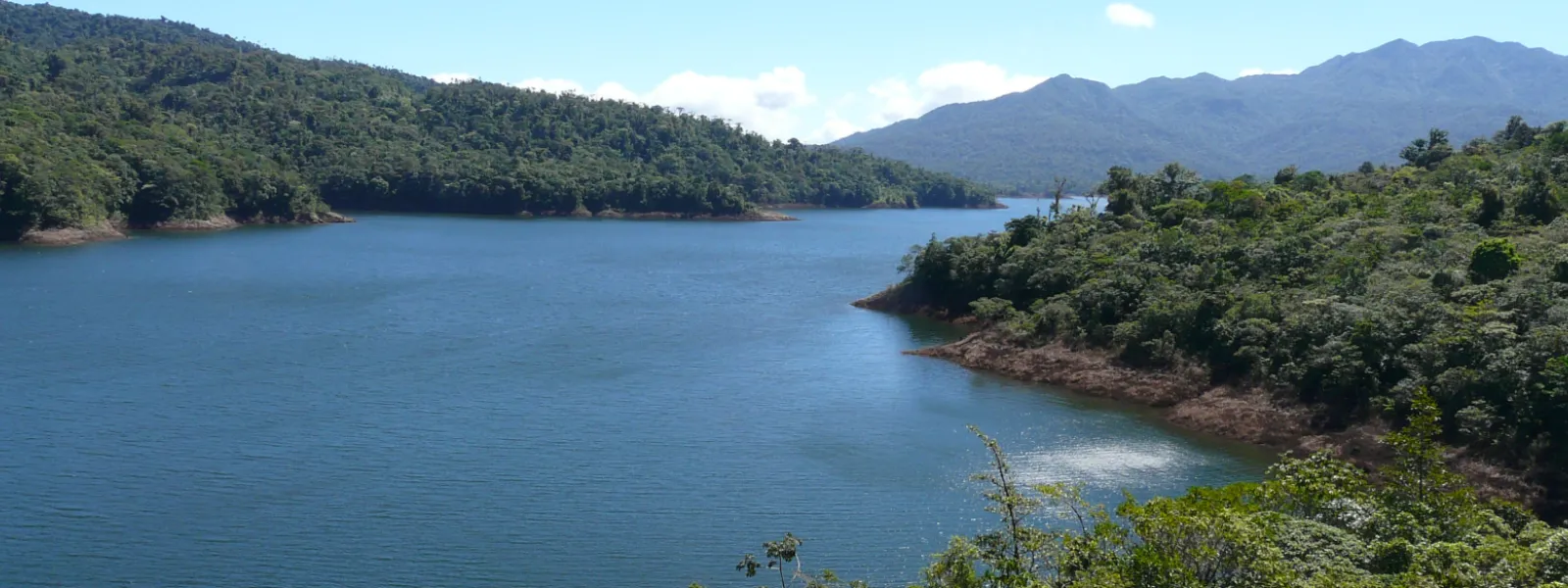
El uso de agua para proyectos en Panamá debe ser sometido a consulta ciudadana
Foto: Rita Willaert (CC BY-NC 2.0).Un tribunal de ese país anuló una norma que permitía que grandes proyectos como represas hidroeléctricas usen hasta el 90% del agua de ríos, lagos y otros ecosistemas. De ese modo se estableció que las autoridades ambientales deben realizar consultas ciudadanas y asegurar la disponibilidad de agua para comunidades y otros usuarios, antes de otorgar concesiones para el uso del recurso en esos proyectos.
Ciudad de Panamá, Panamá. La Sala Tercera de la Corte Suprema de Justicia anuló una resolución emitida en 2012 por la entonces Autoridad Nacional del Ambiente, actual Ministerio de Ambiente, que disponía que hasta el 90% del agua de ríos, lagos y otras fuentes naturales de ese recurso podía ser usada por grandes proyectos de infraestructura como hidroeléctricas. Tras la decisión judicial, la autoridad ambiental no podrá otorgar concesiones para el uso de agua en esos proyectos sin antes realizar consultas ciudadanas y garantizar la disponibilidad presente y futura del recurso para comunidades y otros usuarios.
La anulación de la norma constituye una victoria para el Centro de Incidencia Ambiental de Panamá (CIAM) que, junto con otras organizaciones de la sociedad civil, demandaron ante la justicia que la resolución fuera derogada. Presentaron además una propuesta para regular el caudal ambiental en el país de manera sostenible y protegiendo los derechos humanos.
El caudal ambiental es el flujo de agua que un río u otro cauce debe tener para mantener sus valores ecológicos —refugio de amínales y plantas, preservación del paisaje y disolución de contaminantes, entre otros— y sus valores sociales o su uso por parte de comunidades e individuos. La resolución de 2012 limitaba ese flujo a tan solo el 10% para todos los entornos que son fuente de agua y permitía que el porcentaje restante (90%) quede libre para ser usado en grandes proyectos.
“La Corte de Panamá basó su decisión en los compromisos internacionales que el país tiene de proteger los recursos hídricos y de garantizar los derechos humanos de las personas que dependen de ellos. Esas obligaciones nacen de los tratados que el país ha firmado. Nos complace que la Corte se haya referido además al vínculo entre derechos humanos y protección del recurso hídrico. Se trata de un gran precedente que esperamos sea replicado en otros países de la región”, dijo Gladys Martínez, abogada de la Asociación Interamericana para la Defensa del Ambiente (AIDA).
AIDA apoyó la demanda judicial contra la resolución, así como la propuesta para regular el caudal ambiental en Panamá, mediante un escrito (Amicus Curiae) y una carta, documentos en los que presentó argumentos de derecho internacional para preservar el agua y el acceso a la misma para todos.
Contacto de prensa:
Gladys Martínez, AIDA, [email protected], +506 8321 4263
